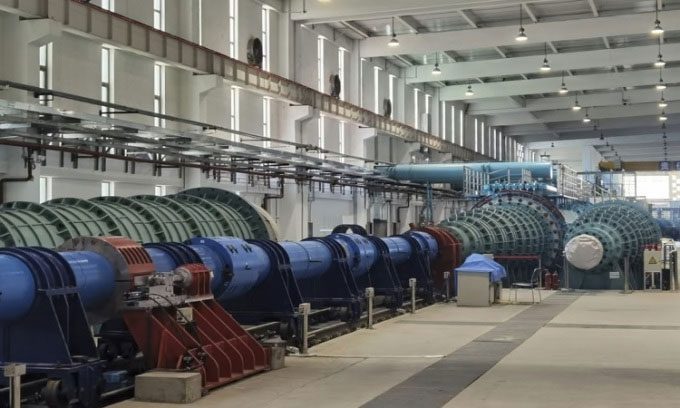After 5 years of construction, the largest and fastest wind tunnel in the world has come into operation near Beijing.
Located in the Huairou District north of Beijing, the JF-22 wind tunnel has a diameter of 4 meters and can create airflow at speeds of up to 10 km/s, according to the final assessment conducted on May 30. This makes it the largest and fastest wind tunnel in the world, capable of simulating flight conditions at hypersonic speeds up to Mach 30 (37,044 km/h), according to the Institute of Mechanics, which manages the JF-22.

The JF-22 wind tunnel can simulate hypersonic speeds of Mach 30. (Photo: SCMP).
This tunnel will “support research and development of space transportation systems and hypersonic aircraft in China,” according to an announcement made on June 2 by the institute. In comparison, the Mach 10 (12,348 km/h) tunnel at NASA’s Langley Research Center in the U.S., a key hypersonic testing facility, has a test chamber diameter of nearly 0.8 meters. The larger test chamber allows researchers to introduce larger aircraft models, even entire weapons systems, into the wind tunnel for more accurate flight data. Most intercontinental missiles have a diameter of less than 4 meters.
The JF-22 aligns with the goals set by the Chinese government, with an effort to be completed by 2035. This involves deploying a fleet of hypersonic aircraft capable of transporting thousands of passengers into space each year, or to any location on the planet within an hour. However, such aircraft must withstand the extreme temperatures and pressures associated with hypersonic flight while maintaining stable flight paths and a safe, comfortable environment for passengers.
At speeds five times the speed of sound, the gas molecules around the aircraft begin to compress and heat up, leading to molecular dissociation. The gas molecules break down into their constituent atoms, which can react with one another to form new chemical compounds. Understanding the complex physical characteristics of airflow associated with molecular dissociation is crucial in the development of hypersonic aircraft.
Through studying phenomena in experimental environments such as wind tunnels, scientists can explore how hypersonic vehicles interact with their surroundings while also developing new technologies to improve performance and safety. Testing in wind tunnels can help identify potential issues or design flaws before vehicles are built and flight-tested, thereby reducing the risk of failure or accidents.
According to some estimates, simulating Mach 30 flight conditions inside the large wind tunnel would require an amount of electricity equivalent to the output of the Three Gorges Dam, which is impractical in reality. Therefore, Professor Jiang Zonglin, the lead scientist on the JF-22 project, came up with an innovative idea.
To create the high-velocity airflow needed for hypersonic testing, Jiang proposed a new type of shock wave generator called “direct reflecting shock wave engine.” In conventional wind tunnels, the airflow is generated through expansion, where high-pressure gas rapidly discharges into a low-pressure chamber, creating supersonic flow. However, this method has limitations when it comes to generating the extremely high speeds and temperatures required for hypersonic testing.
Jiang’s reflecting shock wave engine overcomes these limitations by using a series of precisely-timed explosions to produce multiple shock waves that reflect and converge at a point. The resulting burst of energy will be used to propel the airflow in the wind tunnel at ultra-high speeds.
This initiative paves the way for numerous breakthroughs by making hypersonic flight research more accurate and efficient. Using explosives to generate energy in wind tunnels comes with many disadvantages, such as dangers to both humans and equipment, as well as noise and air pollution. However, because the energy source is derived from explosions rather than fixed machinery, it is possible to adjust the intensity and timing of the explosions to create variable airflow for testing different types of vehicles or materials.
The National Natural Science Foundation of China sent 16 independent experts to evaluate the JF-22 in several key areas, including effective testing duration, total temperature, total pressure, and nozzle flow. They concluded that the JF-22 achieves world-class performance. Along with the JF-12 tunnel, the JF-22 has become the only ground-based testing facility that meets all aspects of near-space vehicles.





















































